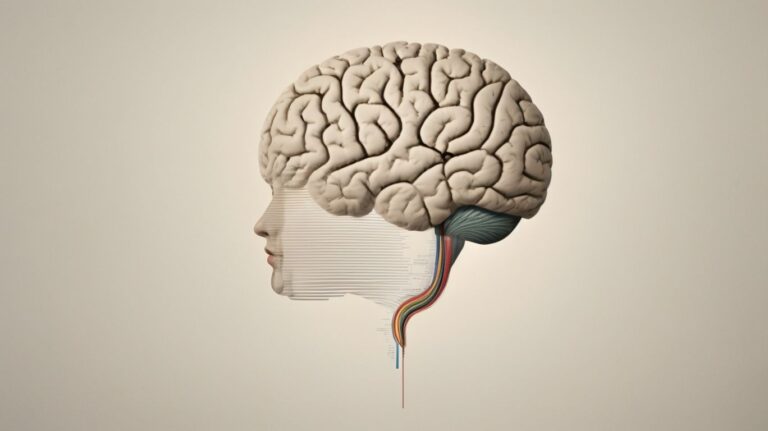Do you often find yourself pacing back and forth, unable to sit still and feeling restless? This behavior is common and can be caused by various psychological and physical reasons.
In this article, we will discuss the different types of pacing back and forth, the reasons behind it, and its effects on mental and physical health. We will also explore strategies for managing and preventing this behavior, as well as when to seek professional help.
Whether you or someone you know experiences this behavior, this article will provide valuable insights and guidance.
Contents
- 1 Key Takeaways:
- 2 What Is Pacing Back and Forth?
- 3 Why Do People Pace Back and Forth?
- 4 What Are the Effects of Pacing Back and Forth?
- 5 How Can Pacing Back and Forth Be Managed?
- 6 How Can Pacing Back and Forth Be Prevented?
- 7 Frequently Asked Questions
- 7.1 What is the psychology behind pacing back and forth?
- 7.2 Why do people pace back and forth?
- 7.3 Is pacing back and forth a sign of a mental health issue?
- 7.4 Can pacing back and forth be beneficial?
- 7.5 How can someone stop pacing back and forth?
- 7.6 Is pacing back and forth a form of self-stimulation?
Key Takeaways:
- Pacing back and forth refers to the repetitive movement of walking back and forth in a confined space.
- Pacing back and forth can be both a psychological and physical response to stress, anxiety, and restlessness.
- Managing pacing back and forth involves identifying triggers, seeking professional help, and finding coping mechanisms such as mindfulness and physical activities.
What Is Pacing Back and Forth?
Psychomotor agitation, commonly known as pacing back and forth, refers to the excessive and uncontrollable urge to move continuously, often accompanied by restlessness and anxiety.
This behavior is often characterized by rapid, purposeless movements, such as fidgeting, pacing, or unable to sit still. It can manifest in various ways, including constant tapping, wringing of hands, or pacing the room without a specific direction or goal.
Individuals experiencing psychomotor agitation may also exhibit increased talkativeness or exhibit impulsive behaviors. The associated feelings of restlessness and anxiety can lead to distress and discomfort, affecting daily activities and overall well-being.
What Are the Different Types of Pacing Back and Forth?
Psychomotor agitation, or pacing back and forth, can manifest in various forms and patterns, often categorized based on the underlying behavioral traits and triggers.
One common type of psychomotor agitation is verbal agitation, where the individual engages in rapid speech, often interrupting others and struggling to focus on a single topic. This form of agitation can be triggered by stress, anxiety, or an inability to effectively communicate their thoughts.
Another type is motor restlessness, characterized by constant movement and an inability to sit still. This can be linked to various conditions such as bipolar disorder, drug withdrawal, or neurodegenerative diseases.
Furthermore, somatic agitation involves repetitive and purposeless movements, such as hand wringing or hair twisting, often stemming from internal discomfort, physical discomfort, or emotional distress.
Why Do People Pace Back and Forth?
The act of pacing back and forth can be attributed to various psychological and physical reasons, often serving as a coping mechanism for emotional distress and heightened anxiety levels.
Psychomotor agitation is often associated with underlying psychological stressors and is characterized by restless and repetitive movements.
These movements can include pacing, fidgeting, or wringing of hands. It is believed to be a way for individuals to dissipate overwhelming emotional tension or anxiety.
Biological factors, such as imbalances in neurotransmitters like serotonin and dopamine, can also play a role in perpetuating psychomotor agitation.
The physiological arousal and restlessness experienced during heightened stress or anxiety can fuel the compulsion to engage in these motor activities.
What Are the Psychological Reasons for Pacing Back and Forth?
Psychomotor agitation often stems from psychological factors such as emotional distress, anxiety disorders, and conditions like bipolar disorder, where the repetitive movements serve as a means of regaining control in times of emotional turmoil.
This type of agitation is frequently observed in individuals experiencing severe anxiety or during manic episodes in bipolar disorder. It manifests as restlessness, pacing, tapping, or fidgeting, indicating an inner state of unease and discomfort.
The involuntary motor activity is an outward expression of inner turmoil, reflecting the intricate connection between mind and body. In anxiety disorders, it can be a response to heightened arousal and the need to release pent-up energy.
Understanding the psychological underpinnings of psychomotor agitation is crucial in providing effective interventions and support for individuals struggling with these conditions.
What Are the Physical Reasons for Pacing Back and Forth?
In some cases, the physical reasons for pacing back and forth may be linked to the side effects of certain medications, brain-related conditions, or underlying neurological factors that warrant further research and understanding.
Medication side effects can contribute to involuntary physical movements, such as restlessness and pacing, as a manifestation of psychomotor agitation.
Certain drugs, especially stimulants or antidepressants, may induce this behavior due to their impact on neurotransmitter levels in the brain.
Individuals with brain-related conditions, including traumatic brain injury, dementia, or neurodegenerative diseases, may experience psychomotor agitation as a result of disruptions to brain function and signaling.
The Psychology of Pacing Back and Forth explores why people pace back and forth when they’re anxious or agitated.
Neurological factors, such as high levels of stress or emotional turmoil, can also trigger psychomotor agitation, highlighting the intricate connection between the mind and body.
Continued research is needed to fully comprehend the complexities of psychomotor agitation, encompassing both its physical and psychological components, to provide comprehensive care and management for those affected.
What Are the Effects of Pacing Back and Forth?
The effects of psychomotor agitation can have significant implications on both mental and physical health, influencing stress levels, emotional well-being, and even exerting physical strain on the body.
Psychomotor agitation can lead to heightened stress levels as the constant movement and restlessness can disrupt a person’s sense of calm and stability. This heightened stress can then impact emotional well-being, potentially leading to feelings of anxiety, frustration, and irritability.
The physical strain caused by the repetitive movements of pacing back and forth can result in muscle tension, fatigue, and overall discomfort.
Over time, these effects can compound, contributing to an individual’s overall sense of well-being and potentially leading to a decline in mental and physical health.
It is crucial to recognize the impact of psychomotor agitation and seek appropriate strategies for managing and addressing its effects on both mental and physical wellness.
How Does Pacing Back and Forth Affect Mental Health?
Psychomotor agitation can significantly impact mental health by contributing to heightened emotional distress, affecting problem-solving abilities, and potentially influencing creative thinking processes amid emotional turmoil.
This heightened state of arousal, commonly characterized by restlessness and the inability to stay still, can lead to an overwhelming sense of unease and exacerbate feelings of anxiety and tension.
Such emotional distress may impede the individual’s cognitive faculties, hindering their ability to analyze and resolve problems effectively.
The influence of psychomotor agitation on creativity is noteworthy. The incessant movement and heightened arousal levels can disrupt the cognitive processes involved in creative thinking, potentially stifling innovative ideas and inventive solutions.
This intricate relationship between psychomotor agitation and mental well-being underscores the importance of addressing these symptoms to promote holistic mental health and well-being.
How Does Pacing Back and Forth Affect Physical Health?
The physical manifestations of psychomotor agitation can exert strain on the body, affecting movements, increasing stress levels, and potentially altering regular walking patterns, thereby impacting overall physical health.
This heightened state of arousal, often expressed through restlessness and an inability to sit still, can lead to increased muscle tension, which in turn places additional pressure on the musculoskeletal system.
The increased tension and movements associated with psychomotor agitation can elevate stress levels, impacting the body’s ability to relax and recover. Altered walking patterns, such as rapid pacing or fidgety movements, can strain joints and muscles, potentially contributing to musculoskeletal discomfort and imbalances.
How Can Pacing Back and Forth Be Managed?
Managing psychomotor agitation involves the implementation of coping mechanisms, professional treatment, and in some cases, the use of antipsychotic medications to address the underlying symptoms and triggers.
One of the effective coping mechanisms is to create a calming environment with minimal stimuli, and engaging in soothing activities such as deep breathing exercises, mindful meditation, or gentle physical movements.
Seeking professional treatment from a psychiatrist or psychologist can provide personalized strategies, such as cognitive-behavioral therapy or other forms of psychotherapy tailored to the individual’s needs.
For severe cases, antipsychotic medications may be prescribed by a qualified healthcare professional to help stabilize the agitated symptoms and restore a sense of calm.
What Are Some Coping Mechanisms for Pacing Back and Forth?
Implementing coping mechanisms for psychomotor agitation involves activities that can help reduce stress levels, enhance problem-solving abilities, and provide alternative outlets such as walking to manage the urge to pace back and forth.
Stress reduction techniques, such as deep breathing exercises, meditation, or engaging in relaxation activities like yoga or tai chi, can be effective in calming the mind and body.
By developing problem-solving strategies, individuals can address the underlying sources of agitation, which may involve seeking professional guidance or support from counselors or therapists to develop adaptive coping skills.
Engaging in alternative activities, like walking in nature, has proven beneficial in redirecting excess energy and restlessness associated with psychomotor agitation.
Incorporating regular physical exercise, whether it’s through dancing, cycling, or swimming, can also contribute to managing the physical manifestations of agitation.
When Should Someone Seek Professional Help for Pacing Back and Forth?
Seeking professional help for psychomotor agitation becomes necessary when the individual experiences persistent distress or impairment in daily functioning, prompting the involvement of mental health professionals such as psychiatrists or emergency medicine specialists.
In such cases, it’s crucial to recognize the underlying causes of the agitation. These can include psychiatric disorders, substance abuse, or medical conditions.
The expertise of mental health professionals is vital in conducting a thorough evaluation, formulating an accurate diagnosis, and developing an effective treatment plan.
This may involve medication, therapy, or a combination of both, tailored to the individual’s specific needs. It’s important to ensure a safe and supportive environment during treatment to effectively manage psychomotor agitation and foster recovery.
How Can Pacing Back and Forth Be Prevented?
Preventing psychomotor agitation involves implementing strategies to reduce stress levels, regain a sense of control, and proactively address triggers that might lead to the urge to pace back and forth in certain situations.
One crucial aspect of managing psychomotor agitation involves incorporating stress reduction techniques into daily routines. Engaging in activities such as mindfulness meditation, deep breathing exercises, or yoga can effectively lower stress levels, helping to prevent the onset of agitation.
Regaining a sense of control is also paramount. This can be achieved through establishing a structured daily schedule, setting achievable goals, and seeking support from mental health professionals to develop coping mechanisms.
It is essential to proactively identify and address potential triggers. This may involve creating a supportive environment, practicing self-awareness, and employing coping strategies when encountering stressors.
What Are Some Strategies for Preventing Pacing Back and Forth?
Implementing strategies to prevent psychomotor agitation may involve incorporating mindful movements, enhancing problem-solving techniques, and exploring ongoing research to better understand and address the underlying triggers.
Integrating mindfulness practices, such as deep breathing exercises and gentle yoga, can help individuals manage their emotions and reduce the likelihood of psychomotor agitation.
Engaging in physical activities that encourage relaxation, such as tai chi or qigong, may also be beneficial in promoting a sense of calm and reducing stress levels.
Problem-solving approaches, including cognitive behavioral therapy and dialectical behavior therapy, can equip individuals with effective coping skills and strategies to navigate challenging situations, thereby reducing the risk of experiencing psychomotor agitation.
These therapies provide individuals with tools to identify triggers, regulate their emotions, and manage distressing symptoms.
Ongoing research in the field of psychomotor agitation continues to expand our understanding of its underlying mechanisms and contributing factors.
This research fosters the development of innovative interventions and treatment modalities, paving the way for more targeted and effective preventive measures for psychomotor agitation.
How Can Pacing Back and Forth Be Avoided in Certain Situations?
Avoiding the urge to pace back and forth in certain situations involves identifying triggers, managing anxiety levels, and implementing strategies to regain a sense of control over the impulses associated with psychomotor agitation.
Identifying triggers for psychomotor agitation involves recognizing specific situations, thoughts, or emotions that typically precede the urge to pace.
These triggers can vary greatly from person to person, but common ones include stress, frustration, and overwhelming stimuli.
By pinpointing these triggers, individuals can proactively prepare themselves to manage their reactions.
Anxiety management plays a crucial role in preventing psychomotor agitation. Utilizing relaxation techniques such as deep breathing exercises, mindfulness meditation, or progressive muscle relaxation can help reduce overall anxiety levels, thereby diminishing the likelihood of experiencing motor restlessness.
Implementing strategies to regain control over psychomotor agitation entails developing coping mechanisms and distractions. Engaging in physical activities, practicing hobbies, or seeking social support can redirect the focus and energy that may otherwise contribute to restlessness.
Frequently Asked Questions
What is the psychology behind pacing back and forth?
Pacing back and forth is a common behavior that involves walking back and forth in a repetitive manner. It can be a physical expression of mental restlessness or agitation, and is often associated with stress, anxiety, and nervousness.
Why do people pace back and forth?
People may pace back and forth as a way to release nervous energy or to cope with overwhelming emotions. It can also be a way to focus or calm the mind, and is often seen as a coping mechanism in response to a challenging situation.
Is pacing back and forth a sign of a mental health issue?
Pacing back and forth on its own is not necessarily a sign of a mental health issue. However, it can be a symptom of an underlying condition such as anxiety, obsessive-compulsive disorder, or attention deficit hyperactivity disorder.
Can pacing back and forth be beneficial?
Pacing back and forth can have both positive and negative effects. On one hand, it can help individuals release tension and improve focus. On the other hand, it can be disruptive and may indicate underlying psychological issues that require attention.
How can someone stop pacing back and forth?
If pacing back and forth is causing distress or interfering with daily life, it may be helpful to identify the triggers and find alternative coping mechanisms. Seeking therapy or practicing relaxation techniques such as deep breathing and mindfulness can also be beneficial.
Is pacing back and forth a form of self-stimulation?
Pacing back and forth can be a form of self-stimulation, especially in individuals with conditions such as autism or sensory processing disorder. It can provide a sense of comfort and regulation, and may be used as a means to cope with sensory overload.




